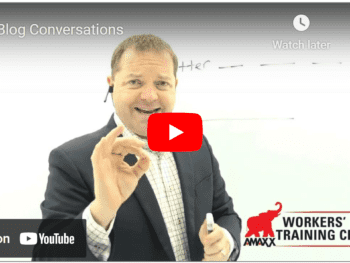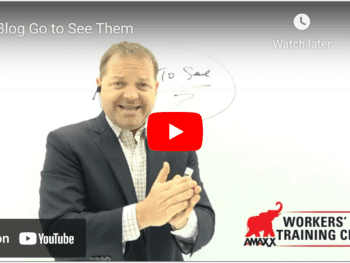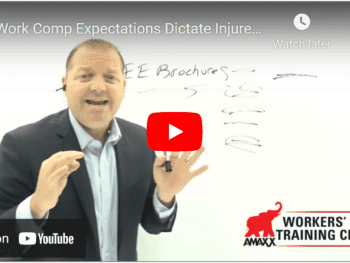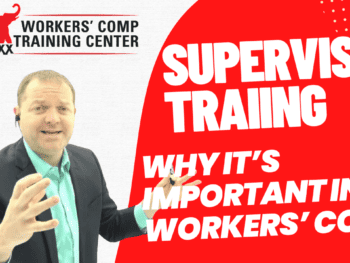Problem:
Employees with a poor work ethics or performance records can be an extra cost and burden on the workers compensation system when they have an on job injury. This type of employee usually lacks natural tendency, parental training, public educational influence, possible religious guidance, self-motivation, habit forming skills, as well as other personal abilities for self-improve.
Click Link to Access Free PDF Download
“9-Element Blueprint To Create Your Workers’ Comp Employee Brochure”
Unmotivated employees can exaggerate their injury, become non-compliant in medical treatment, malinger, add non related medical pathologies, as well as outright lie and even commit fraud.
Today’s social entitlement attitude, weak criminal-judicial system, as well as the societal overlooking or acceptances of such practices seem to make any relief from this problem almost insurmountable.
It is a tough job to change personal behavior. However, there are opportunities and suggested programs that can work.
Planning:
Begin with a plan. This will be a motivational program (just like those created by the great Tony Robbins); therefore the action plan must be doable, simple, yet comprehensive enough to accomplish the goals of improvement and change. Much of the weak work ethic is driven by personal habits, mental attitude, and personality. Occasionally a physical condition may influence the poor behavior.
Every human being is different and will respond to various motivational stimuli. Therefore, the program must allow for various changes in approach and implementation. For example John may just accept a verbal suggestion to incorporate a change in his behavior. On the other hand, Pete may need a reward or discipline before incorporating the change of behavior.
Gather Facts and Data:
Take time to study each problem employee on an individual basis as they are working. This should be done in such a manner so as not to arouse the employee’s angst or suspicion.
Watch their attitudes as they perform their job function. Observe their interface with fellow employees. Listen to how they discuss home environments. Watch body language for negativity. This may require the assistance of professional counselors. It will be necessary to have an existing profile on the employee before beginning the implementation phase.
Implementation:
Once the employee profile is developed, obtain professional counselor ideas or suggestions as to how best approach and start working with the individual. Be friendly. Advise the employee that the program is meant for their sole benefit. Give all suggestions and instructions in clear manner. Be sure the employee understands what is expected. Reinforce by adding that the expected results will also improve personal life activity as well.
Keep sessions short and limit times for instruction or training. Even if professional counselling is used do not allow it to overburden or overwhelm the employee. Interface on a friendly manner with the employee as much and as often as necessary. Reassurance is as necessary as the program itself.
Follow Through:
Congratulate every positive progress point the employee reaches. Give rewards, privileges, extra appreciation comments, or any other provision that will help boost the employee’s morale. This assures continued improvement and should limit any backsliding.
Consider the merits of doing these things publically. This could have a positive impact on fellow employees and raise their esteem for the treating employee. It might also bond the unit together as a team. Further the other employees will get to see that the employer cares about them as well.
Since this is a comprehensive issue with complex potential it is recommended professional behavioral experts be utilized in the development for this behavioral modification.
Conclusion:
Poor work ethics and performance issues can adversely impact workers compensation programs and add excessive cost. They also impact day to day operation, limit production, cause employee morale issues and may develop hostile workplace environments.
These issues delve into employee personal traits. They are a challenge for employers to develop delicate improvement programs. However, successful programs can lead to better employer-employee relationships. Increased production and fewer workers’ compensation claims could also be a fringe benefit.
Author Michael B. Stack, CPA, Principal, Amaxx Risk Solutions, Inc. He is an expert in employer communication systems and helps employers reduce their workers comp costs by 20% to 50%. He resides in the Boston area and works as a Qualified Loss Management Program provider working with high experience modification factor companies in the Massachusetts State Risk Pool. He is co-author of the #1 selling book on cost containment, Your Ultimate Guide To Mastering Workers Comp Costs www.reduceyourworkerscomp.com. Contact: [email protected].
©2015 Amaxx LLC. All rights reserved under International Copyright Law.
SALES TO PAY FOR ACCIDENTS CALCULATOR: http://reduceyourworkerscomp.com/sales-to-pay-for-accidents-calculator/
WC GROUP: http://www.linkedin.com/groups?homeNewMember=&gid=1922050/
Do not use this information without independent verification. All state laws vary. You should consult with your insurance broker, attorney, or qualified professional.














